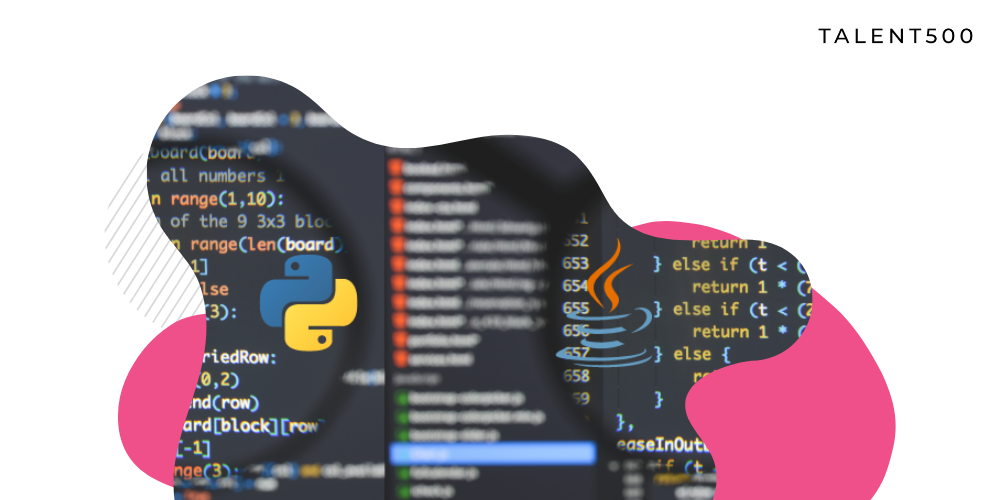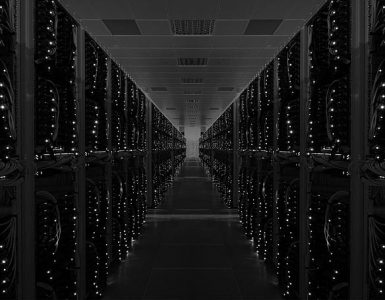In the 21st century, programming is the backbone of technology. Programming language encompasses a collection of instructions, commands, and codebase to design an application or software program.
Programming languages are a vital component of application development. Just like a carpenter, mechanic, architect, etc., have their own specialized toolset, programming languages are essential tool sets for software developers.
However, with advancements in the software development paradigm, several programming languages are becoming popular. Which programming language should you choose? Answering this question can be an overwhelming task.
This blog will discuss the two most popular programming languages: Python and Java.
The Programming Languages Wearing The Crown
In the software development world, the scope, importance, and scalability of Java and Python require no formal introduction.
However, there is an ongoing battle between Python and Java to understand which one is superior. While Python is relatively new in the application engineering domain, it has made rapid progress in the past few years. On the other hand, Java is an old player and retains its glorious position.
To give a quick introduction, Java is a compiled language. Therefore it is a relatively faster and more efficient programming language when compared to Python. Python’s USP is that it has simpler, more concise, and easy-to-understand syntax than Java. It helps developers to design the same functionality using fewer lines of code than Java.
Java vs. Python: A Comparative Analysis
Performance
Bytecode compilation is a similarity between the two programming languages : Java and Python. Therefore, both languages support cross-platform development without any difference between operating systems.
Although both programming languages are used for cross-platform development, there are certain differences between the performance of these two programming languages.
- Java features a static-typing syntax. Static typing syntax enables a simpler and faster compilation when compared to dynamically typed syntax. Therefore the developed software product has less susceptibility to bugs or errors and delivers smooth performance.
- Another winning point for Java is that it is integrated with a Just-in-time (JIT) compiler. With the support of this compiler, the bytecode is directly bundled into the native machine, allowing direct calling of the compiled code.
- Such advanced functionality is the primary reason for the agility and efficiency of this programming language.
However, Java has one drawback. The codes are generally long, therefore, sometimes tough to understand.
- Python uses dynamic type syntax, which isn’t as compatible to align with various platforms.
- Additionally, Python supports runtime testing of the codebase. Any complication with the program or codebase may require holding the entire application.
- All of these variables in the Python programming language lead to reduced speed and efficiency.
According to the TIOBE Index, August 2021, Java was stealing the show as one of the top-performing programming languages. And Python was in 3rd position. However, in 2022, Python gained immense popularity and jumped to the first position in the TIOBE Index, 2022.
Python now enjoys the highest market share with a greater than 15.42 % rating. Java, on the other hand, moved to third position after C and received a rating of 12.40 %. The popularity of Python is mainly because it requires much less coding to perform the same function as Java.
Syntax
- As discussed previously, Python is a dynamically-typed software development language. It doesn’t require stating specific variable types because checks are made during the runtime. This leads to a simpler syntax with a close resemblance to the English language.
- Additionally, you don’t need to use enclosing braces in Python. The language strictly follows the indentation rules. Therefore the overall code becomes easy to read and understand and beginner-friendly.
- With Java, you’ll need to comply with strict syntax rules. The language is statically-typed. Here declaring the variable types is specifically necessary. In the case of any abnormality, the code will not compile.
- Although the statically-typed language is not beginner-friendly, many developers enjoy the comfort of clarity. It can be difficult to follow indentation rules in Python for large codebases.
Machine Learning
With the advancement in technology, machine learning has become an essential element of programming languages. With machine learning, developers and analysts derive important insights through predictions using appropriate data sets.
Implementing machine learning algorithms can sometimes be tricky and challenging because it requires certain practical and theoretical expertise.
- As we have mentioned before, from the syntax perspective, Python is relatively easy. Therefore developers from various backgrounds choose Python as their preferred machine learning implementation language.
- Python gives the flexibility to experiment with machine learning and utilize it in various application development specialties/domains. The features of Python-powered adaptation and implementation of machine learning open a wide array of opportunities for organizations.
- The Python Library is vast and allows easy access for further development.
- However, Java has its unique set of capabilities for supporting machine learning implementation. Easy debugging and usage makes Java suitable for large-scale operations and developing enterprise-level software.
- Some common libraries used by developers in Java include Weka, Mallet, Deeplearning4j, and MOA.
When it comes to machine learning implementation, some software engineering individuals consider it outdated. This is mainly because of its complex syntax. However, it is still widely popular as compared to other programming languages.
From the machine learning perspective, Python offers greater functionality to the developers and therefore enjoys more credibility.
Web Development
Backend web development is concerned with writing server-side code. Developing your own backend technology is not just extremely challenging but also time-consuming. You need to focus on every aspect, starting from security to reliability and performance.
To make backend development easy, developers crafted frameworks that enable backend web development without reinventing the wheel.
- In Python, the popular frameworks for backend development include Django and Flask.
- Flask is a simple micro web framework. It offers you the fundamental functionalities you’d require for software development, such as routing requests, without much overhead.
- Django, on the other hand, is a more feature-enriched framework. It allows the development of a powerful backend web application while capitalizing on product efficiency and security.
- Django features a powerful ORM layer that enables smooth interactions with databases and performing various operations on the data.
Spring is one of the widely-popular backend web development frameworks in Java. The best part is that it’s supported by an incredible ecosystem and a massive community. Leading enterprises such as Dell, GE, etc., leverage Spring framework for Java-based backend web development.
While Spring might not be as popular as Django in the current market, it is still widely used for developing enterprise-level applications.
Use Cases
Both Python and Java are used widely for developing various types of software and applications. When should you use each of these programming languages for different programs or product development?
When To Use Java?
Java is suitable for the following development:
- Highly functional and efficient mobile applications
- Desktop GUI Apps
- Middleware Products
- Enterprise Software Solutions and Embedded Systems
When To Use Python?
Python, on the other hand, offers an exceptional solution for the following developments:
- Game development
- Language development
- Prototyping
- Image processing and creative or graphic designing
- Machine Learning Applications
- Operating System frameworks
Benefits: Python Vs. Java
We have compiled a concise list of benefits for Java programming language and Python.
Java
- Safe and secured: Java doesn’t rely on explicit references. It operates in a virtual server known as a ‘sandbox.’ The virtual server leverages a bytecode verifier to detect unlawful programs. It offers additional security to the entire Java package.
- Object-oriented: Java supports a more logical approach for large, enterprise-level project development. Using Java, you can develop categories that encompass data, entities, and methods. Apart from that, it also allows code reusability, easy adaptability, and simple troubleshooting.
- Multi-threading: Java allows the simultaneous execution of several threads. To enhance efficiency and speed during multiple-thread execution, they function on shared memory space.
Python
- Empowers advancements: The dynamic-typing functionality makes Python a user-friendly programming language. Besides, the parallel programming enables independent code operation to address issues and bottlenecks more seamlessly.
- Greater Flexibility: Python supports a wide array of programming concepts, allowing a more flexible and efficient strategy for code development and application engineering. This makes it ideal for start-ups and small enterprises that might require to quickly switch strategies for scalability. It is also great for engineers who want flexibility.
- Enhanced efficiency: The dynamic typing and simple syntax make Python more productive. The easy access system and control functionalities are added benefits.
- Comprehensive libraries: The comprehensive libraries are capable of handling numerous common operations and commands. Plus, Python has code for performing innumerable tasks, such as developing documentation and CGI.
Java Vs. Python: Comparison At A Glance
The following table summarizes the key differences between Java and Python.
| Parameters | Python | Java |
| Syntax | The learning curve is simple | Complex understanding. Takes time to adapt |
| Performance | Comparatively slower than Java | Considerably fast since it is a compiled programming language |
| Backend frameworks | Django (feature-rich) and Flask (micro-framework) | Spring |
| Game Development Engines | Cocos, Panda3D | MonkeyEngine |
| Cross-Platform | Yes | Yes, supported by JVM |
| Industry Examples | Quora, Instagram, Meta, Pinterest, Google | Uber, Spotify, Netflix, Minecraft |
| Machine learning libraries | Tensorflow, Pytorch | Weka, MOA, Mallet, |
| History | Developed by Guido Van Rossum in the late 1980s, Python1.0 was released in 1994. | In 1991, initially started as a project called ‘Oak’ by James Gosling. 1995 witnessed the first implementation of Java 1.0. |
| Syntax Style- Semicolon | No semicolons needed | A semicolon must be present at the end of the line. |
| Indentation | Extremely significant. The program won’t compile without accurate indentation. | Indentation does not influence the compilation of programs. |
| Practical Applications | Used in applications including data analysis, scientific computing, big data, implementation of machine learning, and artificial intelligence. | Ideal for developing e-commerce platforms, android applications, network security, financial software products, fraud detection, and desktop applications. |
| Code Readability | Focuses on code-readability, thus maintaining a clean and concise code base. | Requires efforts to focus on better code readability. |
Frequently Asked Questions
Which is Superior- Java or Python?
Both programming languages have their unique set of benefits and disadvantages. Both have different practical applications. So it ultimately depends on what you desire to develop and your development goals.
Is Python Easier than Java?
Python is definitely beginner-friendly since it has a simpler codebase. One of the vital reasons that make Python easy is the readable, English-like syntax. Java, on the other hand, has a steeper learning curve.
Which is faster- Java or Python?
Java is powered by a JIT compiler giving it better performance than Python.
Should I Choose Python or Java for Backend Development?
Python can be learned and understood easily. Therefore, you can get up and running on backend web development comparatively quickly. However, if you’re looking for long-term performance in complex applications, Java is the ideal choice.
Which Pays More- Java or Python?
The median salary range for both Python and Java developers is approximately the same. Python developers’ average salary is approximately a median of $97,000, while Java developers get a median of $96,000 in the US.
Should I switch from Java to Python or vice-versa?
Currently, various opportunities are available for both Java and Python developers. Unless you have a specific goal or interest, switching isn’t necessary.
Wrapping Up
Java and Python are both incredibly capable and extremely popular languages. Therefore, you will never find a lack of resources once you choose a particular language and embark on your development endeavor. Defining your goals and understanding what you want to achieve can help you select a particular language. Share your thoughts in the comment section.






Add comment